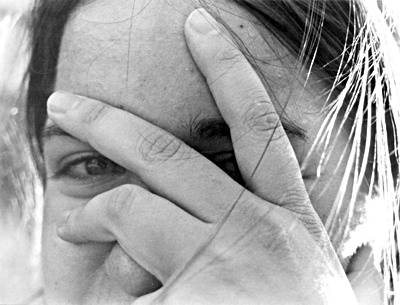All Nonfiction
- Bullying
- Books
- Academic
- Author Interviews
- Celebrity interviews
- College Articles
- College Essays
- Educator of the Year
- Heroes
- Interviews
- Memoir
- Personal Experience
- Sports
- Travel & Culture
All Opinions
- Bullying
- Current Events / Politics
- Discrimination
- Drugs / Alcohol / Smoking
- Entertainment / Celebrities
- Environment
- Love / Relationships
- Movies / Music / TV
- Pop Culture / Trends
- School / College
- Social Issues / Civics
- Spirituality / Religion
- Sports / Hobbies
All Hot Topics
- Bullying
- Community Service
- Environment
- Health
- Letters to the Editor
- Pride & Prejudice
- What Matters
- Back
Summer Guide
- Program Links
- Program Reviews
- Back
College Guide
- College Links
- College Reviews
- College Essays
- College Articles
- Back
Teen Anxiety and Depression: The Stigma
There is an ever-present and damaging stigma surrounding anxiety and depression, especially regarding our youth. If a child is diagnosed with cancer, we send our prayers, we fundraise, we sympathize and empathize. If someone breaks their arm, we rush to sign their cast and we tell them, “I’m so sorry! Is there anything you need?” What about when someone says they suffer from anxiety and/or depression? We say they’re just doing it for the attention. We blame it on them because we think, “everyone gets sad, they’re just making it a bigger deal of it than it is; they’ll get over it soon enough.” Why can’t our society understand that this is wrong?
“Kids these days” aren’t just “angsty”; they’re sick. They need help and a support system. By creating and enforcing a harsh stigma we alienate the entire 25% of teens affected by anxiety and the 10-15% affected by depression. This issue is far too common to risk isolating the diverse population that it affects.
Part of the problem lies in who we believe it impacts. When we think about someone who suffers from depression what do we see? Maybe it’s a kid sitting alone at a lunch table. Maybe they’re decked in head to toe black -- you know, the emo kid with no friends. Do we see the blonde-haired, blue-eyed beauty with perfect grades and picture-perfect popular friends and social life? Do we see the completely average guy that sits next to you in math class or is it the girl who never fails to make us laugh and always has a smile ready on her lips? Any and all of them could be suffering from anxiety and/or depression.
Anxiety and depression - or any mental illness - does not have a face. There is no “type”. Sometimes you can spot it among your peers with special care and attention. Other times we incorrectly identify and label them because they fit into a certain image and stigma, but often there’s no way to tell from afar. Mental illnesses aren’t contagious; we don’t get depression if we stand too close to someone who we know or believe to be suffering from it. The standard is to run away; to avoid the weird person who’s always sad and to tell everybody else that they’re being overdramatic and only doing it for the attention. Sadly, this is what happens. And it needs to stop.
There is a stigma around teens, but mental illnesses don’t just go away once you’re no longer an adolescent; it can stay with someone well into adulthood and possibly for the rest of their life. Over half of all American college students have reported anxiety. And “Data from the National Institute of Mental Health (NIMH) suggests the prevalence of anxiety disorders in the U.S. may be as high as 40 million, or about 18 percent of the population over the age of 18, making it the most common mental illness in the nation” (Dr.Marcola). We live in a time where these illnesses affect a large percent of the population, yet is still misrepresented in the media. This lack of accurate representation is damaging to our youth. As I grew up with these images of what depression and anxiety is “supposed” to look like, I created the same image of mental illness that many do. I will admit to having had prejudice towards people who fit that picture and have treated them differently because of it. Over the years, I’ve struggled to change the way I look at mental illnesses, but have successfully done so through active and persistent attention to the issue; I encourage you to do the same.
Adolescents are constantly being assessed and compared to their peers, creating a hostile and competitive environment in which mental illnesses such as anxiety and depression thrive. So do your part and get educated. Find out what anxiety and depression really is and know what it truly looks like. Remember: mental illness does not have a face; it can affect anyone and the worst thing you can do is further alienate and stigmatize the suffering population.

Similar Articles
JOIN THE DISCUSSION
This article has 0 comments.
